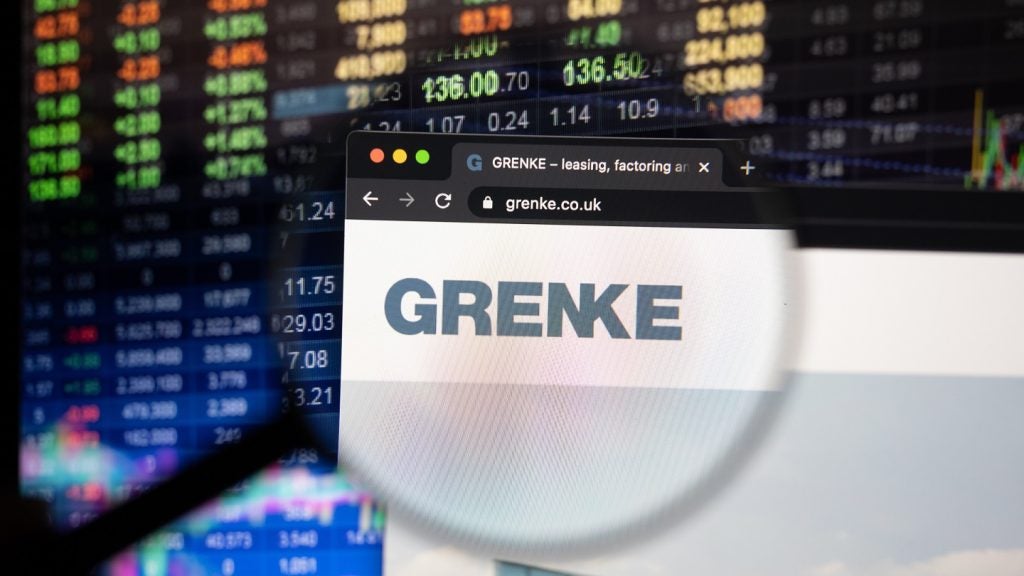Dependent on large pieces of technology and a buoyant second-hand market, agriculture has always played a core part in the leasing industry. With new technology, financial products and political shifts such as the UK’s departure from the EU, the sector is, however, going through profound changes. Christopher Marchant speaks to experts in the field.
The fourth industrial revolution refers to digital developments across the primary, secondary and tertiary sectors. In agriculture, the term can apply to anything from seeds in the ground to satellites in space.
Andreas Richling, international programme manager for Société Générale Equipment Finance, has been tasked with taking a global lead in developing business from the agriculture sector. He explains: “Having GPS to utilise harvest cartography since the early 2000s, the agriculture economy now heads towards full supply-chain control for the whole harvest process.
“There are additional developments such as multispectral cameras [thermal imaging] via flight and satellite reconnaissance, as well as local analysing features on the fields that are making distant controls of the yield’s growth easier, and granting opportunities for more effective use of fertilisers and petrochemicals.
“All these features could be financed individually, and attached like portable GPS in a car. In the dairy business, tracking a cow’s health, its feeding and milking could also be optimised for best performance and wellbeing with some smart-farm technologies, which could be financed or rented to farmers.”
On the types of agricultural asset that Lombard works with, director Leah Waterhouse comments: “What customers are often surprised about is the flexibility and ability to fund such a huge variety of equipment. This ranges from potato boxes to bespoke milking parlours, and of course the more so-called ‘standard’ asset finance products such as tractors.”
How well do you really know your competitors?
Access the most comprehensive Company Profiles on the market, powered by GlobalData. Save hours of research. Gain competitive edge.

Thank you!
Your download email will arrive shortly
Not ready to buy yet? Download a free sample
We are confident about the unique quality of our Company Profiles. However, we want you to make the most beneficial decision for your business, so we offer a free sample that you can download by submitting the below form
By GlobalDataShe adds: “Essentially, Lombard encourages customers to ask us whether there is a certain asset to possibly finance, as there is always a distinct likelihood that the company can.”
Brexit
The UK’s departure from the EU may potentially have a massive effect on the agriculture industry, with possible competition from large-scale imports under WTO rather than EU standards.
The EU’s Common Agricultural Policy (CAP), an initiative that began in 1962, aims to support farmers by guaranteeing a reasonable living, and also to improve productivity in the agriculture sector. It was intended to guarantee a stable and affordable food supply for people throughout Europe. With Brexit on the horizon, the UK has committed to the CAP until 2020.
According to Jean-Michel Boyer, chief executive officer at BNP Paribas Leasing Solutions UK: “For farmers in the UK and Ireland there is some trepidation and, as a result, a reluctance to invest in new equipment. A new system replacing the CAP is set to be introduced in 2024, but in the interim, farmers will benefit from finance solutions that enable them to spread their costs and manage cash flow.”
David Walton, head of agriculture in the UK at Société Générale Equipment Finance, is willing to assess the long-term implications on an even level. “It is difficult and dangerous to speculate on what might happen as a result of Brexit,” he notes. “The government has produced a white paper that indicates a plan for agriculture that focuses on how food is produced rather than what food is produced. What would really be great is if there was a campaign to promote purchasing UK produce, making food production and food security of high consumer awareness. The UK can and should be more self-sufficient in terms of food production.”
Taking a more general look at how EU policy affects leasing, Richling adds: “Within the agricultural sector, a limiting factor for financial offers in leasing is that subsidies from the EU and local governments are in most cases connected to the ownership of the machine. A lessee of a machine will not be able to benefit from both subsidies and advanced leasing solutions within the same investment. If such programs apply, the customer would need to stay with solutions like loan and hire purchase.”
agriculture solution
Agriculture is a seasonal industry, and margins are prone to fluctuation dependant on harvest yields. As a result, equipment is often seen as a very costly upfront purchase, which can be detrimental to a farmer’s cashflow.
According to Boyer: “Leasing is a way for farmers to access the assets they need without straining their budgets, and with flexible contract lengths and payment plans to suit their needs. By having access to the latest equipment, farmers can innovate to work more efficiently and get the most out of their produce, in turn boosting their profits.”
As for alternative ways in which leasing helps farming and agricultural businesses grow, Walton connects this with the overall appeal of leasing as a product.
“The utilisation of specific lines of credit or finance outside traditional bank lending can bring many advantages to agricultural businesses,” he explains.
“Asset finance can be structured to an individual asset and the cash flow that it brings within the overall business, which can utilise fixed-rate funding and can assist with how and when VAT is paid.”
New Technologies
Within the last decade, the agriculture sector has seen a boom in the range of new technologies funded by leasing, from the Internet of Things to developments in the pesticide and fertiliser industries. It is predicted that the number of internet-enabled device installations in agriculture will hit 75 million by 2020, growing by 20% annually.
There have also been technological developments within leasing that can be applied to agriculture businesses. Patrick Jelly, commercial director at Aldermore Asset Finance, says: “Aldermore is currently piloting a new portal to provide better solutions in response to this growing market. It will offer flexible terms including seasonal payments, balloon payments and flexible deposits. This will enable businesses to spread the cost of an asset through fixed payments, in turn, freeing up working capital. Document production and e-sign also ensure that deals are completed simply and quickly.
“As Aldermore continues to grow in this sector, it will use technology to support our personal underwriting service, which will help us deliver more funding to agricultural businesses.”
Looking at the wider context of technological development in the business and agricultural spheres, Boyer says: “Automation is a major technology advancement in the agriculture industry. The application of Internet of Things technology in the sector has created smart agriculture and smart farming.
“The industry has already seen the benefit of this automated technology due to the sheer amount of data being collected. The data is being used to better manage internal processes and costs, improve efficiency, as well as reduce waste.”
Broker Channel
Brokers can act as the crucial link between the customer and equipment providers, forming relationships that can span the lifetime of a business.
“The broker channel is of increasing importance in the agriculture sector – and in fact every sector,” notes Waterhouse. “This may be due to customers wanting to get the lowest rate possible and using others to try and achieve it. Due to the broker market, the market is increasingly price-led, regardless of specialism.”
According to Boyer: “BNP Paribas Leasing Solutions UK works with a panel of specialist agriculture finance brokers to build long-term relationships with them. For farmers, these brokers offer a solution that meets a multitude of needs through one touchpoint. This is because brokers can get under the skin of a business to really understand a farmer’s requirements. To meet their unique needs, they do not just specialise in one piece of equipment or work with one manufacturer, they operate across the sector.”
Europe-Wide Trends
Outside ongoing political machinations, Europe has been experiencing many different trends in agriculture leasing. With its wide geographical remit, Société Générale Equipment Finance is well positioned to see these changes and act accordingly.
“As an overall trend the total cost of ownership, drilling down into cost for using an asset into different components, is becoming more and more of a focus,” Richling notes.
As a result, the machine’s lifecycle could be split into two to three usage periods, within Western, Central and Eastern Europe, and finally Russian or African usage. This could create some efficiency gains, generating lower total cost of ownership throughout a machine’s lifetime. The reasoning behind is the lower price of labour and spare parts in less developed economies.
“Going down this path, there is no more need to own the machine specifically in the first phase of this approach, when the machine’s value is the highest,” explains Richling. “The interest lies in using and having the manufacturer or funder taking large parts of the residual value risk at end of usage time. Additional to this, pure pay-per-use models could be of interest, as they transfer many of the ownership risks to a third party.”
Resale
What Richling has touched on is a booming and resilient resale market. Expanding on the finer details of this particular area, Boyer notes: “At the end of its life, a farmer might trade in a tractor, for example, as part exchange against a new one. The old tractor often has a second life with a farmer or farm contractor.
“Farmer-to-farmer sales, with one farmer selling a used asset at a reduced price, are common. Furthermore, for farmers operating outside the UK, the low exchange rate for the pound against the euro means second-hand assets are an attractive purchase.”
Waterhouse echoes Richling’s view of the robustness of the resale element of agriculture leasing. “Normally Lombard uses hire-purchase agreements, and therefore the asset stays with the customer at the end of their term,” he explains.
“Essentially, we have enabled the customer to match their payments with the asset’s useful life. They can then get further time out of the assets. Generally with agriculture, the assets are sweated until they are no longer of use to anyone.”
High Street or Specialist?
The agriculture market has traditionally been known to prefer high street banks over specialist lenders, but this arguably conservative approach may be shifting.
“As alternatives to high street banks, specialist and experienced lenders can finance equipment that the high street banks cannot,” says Boyer. “Manufacturers benefit from partnering with specialist finance providers to offer financing solutions for dealers and their customers. These schemes are flexible, quick to arrange and competitive; they are unlikely to be beaten by high street banks.”
Walton adds: “UK agriculture has long had the ability to use specialist agricultural funders, such as Highland Finance back in the 1970s. All banks want to show themselves as the ‘farmer’s bank’, as the industry is traditionally asset-rich and land prices – and land security – have much to offer.
“In truth, most – if not all – banks have reduced their resource working with agriculture over the past 20 years, which has allowed the opportunity to be taken by industry-specialist lenders. Like all markets, there are pale imitations and opportunists who are keen to ‘fish in shallow pools’ rather than commit fully in terms of operational resource and industry knowledge.”
Seasonal Nature
Agriculture is a seasonal business in terms of harvest and profits. For this reason, when it comes to financing equipment, the agriculture market can have different requirements from other industries.
Waterhouse says: “Lombard has the ability to make payments seasonable, thereby matching the cash flow of our customers. For example, we can time larger payments with when the Single Farm Payment is made, allowing them to manage budgets and their day-to-day finance more easily.”
Breaking down where seasonality can be an advantage to farmers, Boyer says: “For equipment that is only required at specific times of the year, like combine harvesters, which operate for a two to four-week period, operating leasing solutions are available.
“The benefit of these solutions over hire purchase is that farmers need only put down a minimal deposit up front and make small fixed payments. They also have the ability to hand back the asset at the end of the term and replace it for new next time they need it.
“With hire purchase, the farmer owns the asset at the end of the term. For equipment that will be in use all year round, like tractors, ownership is often the preferred option.”
Conclusion
Agriculture is proving to be an industry that is fully embracing developments in leasing, such as greater flexibility in payments and the cultivation of specialist agriculture lenders.
Questions remain for the future – as they always do in any industry – but if agriculture continues to make full use of technology and an ever-expanding international resale market, it will have many strong seasons ahead.







